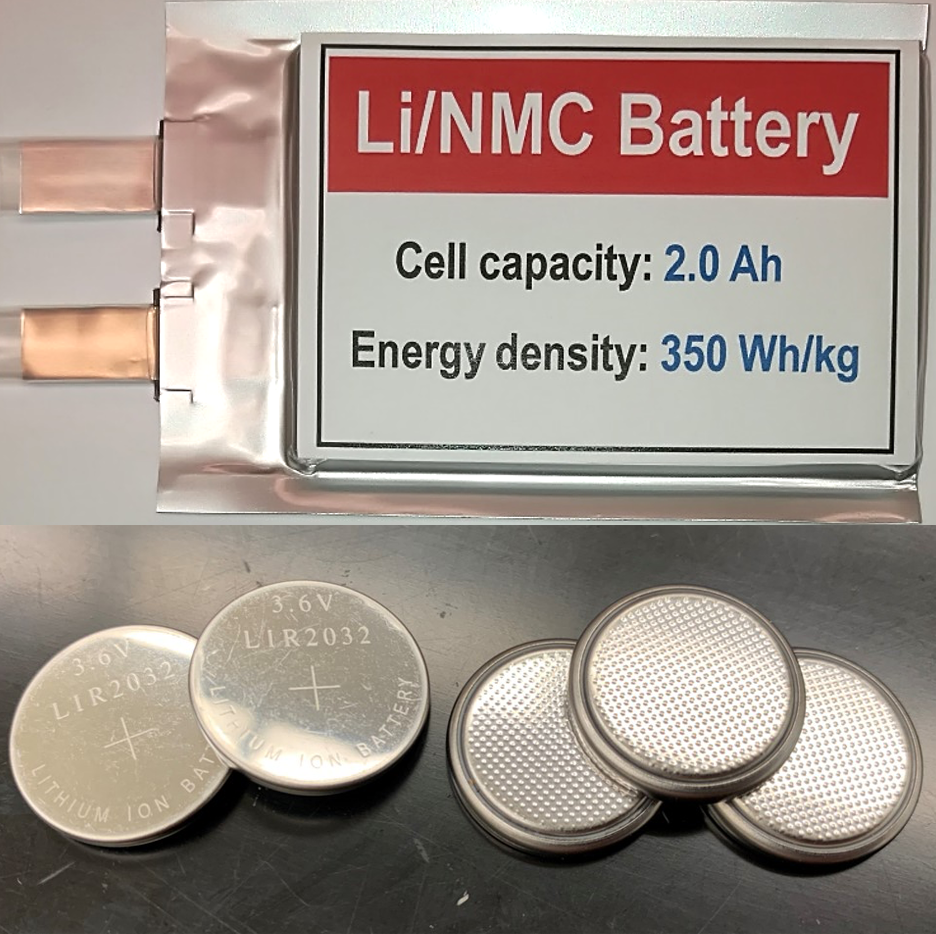(Longer-Lived Lithium-Metal Battery Marks Step Forward for Electric Vehicles)
2021-06-28 アメリカ合衆国・パシフィック・ノースウェスト国立研究所(PNNL)

・ PNNL が、幅が僅か 20μm のリチウム薄膜片をアノードに使用したリチウム金属電池(パウチセル)で、過去最高となる 600 回の充放電サイクルを達成。
・ 本研究は、PNNL が率いる複数機関によるより軽量、パワフルで安価な EV 用電池の研究開発活動である、米国エネルギー省(DOE)の Innovation Center for Battery500 Consortium を通じて実施。PNNL は、パートナー機関による最新の研究成果の高エネルギーパウチセルへの適用と、実際の使用条件下での性能の実証を担当する。
・ 4 年前に開発した実験的なリチウム金属電池では 50 サイクルであったが、2 年前には 200 サイクルへと飛躍的に向上。今回の成果である 600 サイクル後は、初期電池容量の 76%を維持した。Battery500 チームが開発したリチウム金属電池では、350Wh/kg の極めて高いエネルギー密度を達成している。
・ 今回の 600 サイクルの達成は、アノードでの分子の詳細な動的過程の解明を踏まえたリチウム薄膜片の採用によるもの。アノードと電界液界面に形成される SEI 被膜付近で起こる複雑な化学反応において、より厚い片が電池の故障の直接的な原因となることを発見した。SEI 被膜は、アノードと電解質間で特定の分子のみを往来させるゲートキーパーの役割を担っている。
・ SEI 被膜はまた、電池性能を低下させて故障を招く望ましくない化学反応を抑制する。電解質とリチウム金属間のこのような化学反応を抑制して重要な化学反応を促進することが主要な目標となっている。
・ 本研究では、より薄いリチウム片が好ましい SEI 被膜を形成し、片が厚くなるほど悪影響となる SEI被膜を形成することを確認。リチウム片が厚いことで電解質がリチウムのポケットに深く侵入する必要があり、リチウムに接する電解質を欠乏させて必要な化学反応を停止させる。このことは、コインセルに比べて電解質の量が 20~30 倍少ないパウチセルでは特に重要となる。
・ Battery500コンソーシアムでは、長寿命、安全で低コストな電池のエネルギー増量を目的とする。現在の EV 用電池ではエネルギー密度が 200~250Wh/kg のところ、Battery500 では 500Wh/kg の実現を目指す。本研究に関与したニューヨーク州立ビンガムトン校教授の Stanely Whittingham 氏(2019 年に吉野氏、グッドイナフ氏と共にノーベル化学賞を受賞)は、今後のリチウム金属電池開発において、特に安全性の問題について重要視している。
・ 本研究には、DOE EERE の自動車技術局(VTO)が資金を提供した。
URL: https://www.pnnl.gov/news-media/longer-lived-lithium-metal-battery-marks-step-forwardel-ectric-vehicles
<NEDO海外技術情報より>
(関連情報)
Nature Enegy 掲載論文(アブストラクトのみ:全文は有料)
Balancing interfacial reactions to achieve long cycle life in high-energy lithium metal batteries
URL: https://www.nature.com/articles/s41560-021-00852-3
Abstract
The rechargeable lithium metal battery has attracted wide attention as a next-generation energy storage technology. However, simultaneously achieving high cell-level energy density and long cycle life in realistic batteries is still a great challenge. Here we investigate the degradation mechanisms of Li || LiNi0.6Mn0.2Co0.2O2 pouch cells and present fundamental linkages among Li thickness, electrolyte depletion and the structure evolution of solid–electrolyte interphase layers. Different cell failure processes are discovered when tuning the anode to cathode capacity ratio in compatible electrolytes. An optimal anode to cathode capacity ratio of 1:1 emerges because it balances well the rates of Li consumption, electrolyte depletion and solid–electrolyte interphase construction, thus decelerating the increase of cell polarization and extending cycle life. Contrary to conventional wisdom, long cycle life is observed by using ultra-thin Li (20 µm) in balanced cells. A prototype 350 Wh kg−1 pouch cell (2.0 Ah) achieves over 600 long stable cycles with 76% capacity retention without a sudden cell death.



